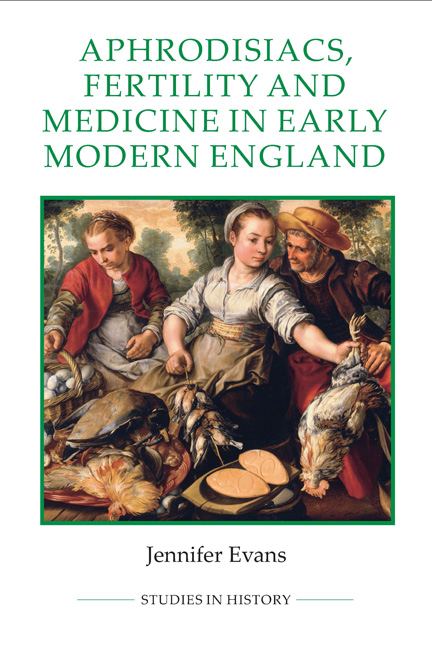Book contents
- Frontmatter
- Contents
- List of illustrations
- Acknowledgements
- Abbreviations
- Note on the text
- Glossary
- Introduction
- 1 Texts, readers and markets
- 2 The reproductive and the infertile body
- 3 Provoking lust and promoting conception
- 4 Enchanted privities and provokers of lust
- 5 Aphrodisiacs, miscarriage and menstruation
- Conclusion
- Bibliography
- Index
5 - Aphrodisiacs, miscarriage and menstruation
Published online by Cambridge University Press: 05 November 2014
- Frontmatter
- Contents
- List of illustrations
- Acknowledgements
- Abbreviations
- Note on the text
- Glossary
- Introduction
- 1 Texts, readers and markets
- 2 The reproductive and the infertile body
- 3 Provoking lust and promoting conception
- 4 Enchanted privities and provokers of lust
- 5 Aphrodisiacs, miscarriage and menstruation
- Conclusion
- Bibliography
- Index
Summary
‘THE Signs of this Disease are manifest; for such as are Barren, either bear not at all, or very seldom, and they breed but Weak and Tender Children.’
Although discussions of barrenness and infertility were centred on the moment of conception, this was not viewed in isolation. Overall it was the inability of women, and men, to produce children that medical writers and practitioners were attempting to correct. There were two particular elements of the female body and reproductive process that had to be managed in order for a couple to demonstrate their fertility through living offspring. The first of these was menstruation, which was acknowledged to be of vital importance to the process of generation. Without adequate menstruation women were thought to be incapable of conceiving or nourishing the foetus in utero. Indeed medical writers discussed at length whether women were fertile and could have children before menarche (the onset of menstruation): Nicholas Culpeper for example asserted that ‘They are called by some Flowers, because they go before Conception, as flowers do before fruit.’ It was imperative, as this chapter will demonstrate, that adequate menstrual bleeding was established before a couple could proceed to the process of generation. The second area of concern for medical writers was the potential for miscarriage. Conceiving a child was only the first step in bearing children.
- Type
- Chapter
- Information
- Aphrodisiacs, Fertility and Medicine in Early Modern England , pp. 160 - 190Publisher: Boydell & BrewerPrint publication year: 2014



